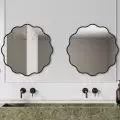Public Architecture
For more articles on similar topics, see A&B issue 02/2024 - PUBLIC ARCHITECTURE,
from which we publish the article below. Download free e-issues of A&B and read more.
How to achieve quality in a public building when the contractor is selected under the Public Procurement Law, and the decisive criterion is the lowest price? Romuald Loegler answers this question, using the example of the realization of the Polish Theater building in Szczecin.
Undercutting the architectural standards of objects that are national cultural assets, realized with public money in the "design or design and build" system, should not take place. Similarly, it should be unacceptable to carry out the so-called optimization of solutions without the participation of the creator deprived of the possibility of performing author's supervision.
The quality of architecture and public spaces of cities is often discussed in the circles of architects and urban planners, as well as in the pages of professional magazines. Recently, most often in the aspect of a healthy city. A fashionable topic, also politically, in an era of discussions about climate change and poisoned air threatening people's health. Physical health, an important aspect of life, also has its references to mental health, which is significantly influenced by the aesthetic quality of the surrounding space. Culture and the quality of public spaces are animated by architectural objects, among them also cultural facilities: cultural centers, opera houses, theaters, museums, facilities for cultural activities, which are also an important element of economic development. The economy in Poland does not use them effectively enough in making socio-economic changes at the structural level.
Polish theater in Szczecin, model
© Atelier Loegler Architects
Bright moments in the realization of buildings for culture are also accompanied by the darkest ones. More often than not, this is the result of the rules governing public procurement, which, despite prestigious competition wins, deprive authors - architects - of the right to author's supervision, an essential instrument that enables them, also in the interest of the investor, the state, to enforce the quality of architecture perpetuated in the awarded vision and accepted by the public investor - a quality that is identical to economics in the broadest sense. An economy not only inherent in the quality of construction, but also in the cultural, intangible quality, transmitted to the public space used by the national and international community, testifying to the civilizational level of development of Poland!
The almost ubiquitous rooting of the notion of "optimization of solutions" without the participation of the decision-making architect of the creator allows us to fully agree with the statement of Professor Zbigniew Paszkowski that
significant changes should be made in the public procurement system for architecture. The visions of creative architects, winners of architectural competitions, should receive due recognition, and architects should receive respect for their extraordinary creative abilities.
What were the biggest design challenges?
The very search for space for the new headquarters of the Polish Theater was a challenge - space adequate to the needs of the theater's operation; this was not possible within the framework of the existing historic building - the pre-war headquarters of the Freemasons.
The theater decided to conduct the search for spatial expansion of the headquarters in the form of an architectural competition. The guiding idea was to respect the historical values, while adding a new, contemporary, adequate, expressed in the language of architecture of our time.
Polish Theater in Szczecin
photo: Marcin Czechowicz
The Chrobry Embankment (originally - Haken' s Terrace), this famous urban-architectural assumption, together with the main building of the National Museum, the Castle of the Pomeranian Dukes and St. James Cathedral, form the riverside silhouette of Szczecin, built between 1902 and 1921 according to the concept of Wilhelm Meyer-Schwartau. This is an example of site transformation that provides a contextual reference to the planned site transformation of the location of the new Polish Theater building.
The modernist building, which is the current headquarters of the Polish Theater in Szczecin, was built in the 1920s for a Masonic lodge designed by architect Adolf Thesmacher, and from 1937 to 1945 was the headquarters of the Graufrauenschafthaus party organization. It was placed under the strict protection of the Provincial Conservator of Monuments.
The winning project for the Polish Theater, selected through an international competition, consciously, deliberately protects the historical character of the site, so that the place of existence of a cultural institution of merit for the city becomes permanently inscribed in the collective memory.
It does not change the character of this part of the city, an icon of Szczecin's landscape - the Chrobry Embankment. An expanded theater function has been introduced into this place of reflection and social interaction. The architectural vision integrated into the Oder embankment preserves the historic landscape, introducing a new quality - a symbiosis of landscape architecture with architectural artifacts defining the image of the new Polish Theater building.
Polish Theater in Szczecin
photo: Marcin Czechowicz
What was successful and what was unsuccessful during implementation?
As a result of the procedure adopted and the implementation of the investment in the highly imperfect "design and build" mode on the basis of the so-called PFU, significant architectural and cultural values fixed in the construction project, approved by the conservator of monuments, were degraded. The "author's consultations" did not help either.
Polish Theater in Szczecin
photo: Marcin Czechowicz
The functional and spatial idea of the building was saved, but there are elements implemented by the investor on the basis of the mentioned PFU, which significantly contradict the author's and approved solutions of the ALA project, such as the resignation of theof the opening glazed dome covering the Shakespeare theater hall, as well as the park-garden assumption required by the conservator's agreement of the project, which refers to the historical land use in the foreground of the former Berlin Freemasons' headquarters building. This park and garden establishment designed in accordance with the conservator's requirements today turned, without my consent but with the conservator's approval, into a fan park!
This is a classic example, proof straightforward, of how the potential of a place can be wasted, as a result of the implementation of large and important public utility projects based on the cited "design and build" procedure.
Prof. Romuald LOEGLER
Atelier Loegler Architects



























